UX/UI
Case Study
Turn healthy eating into an effortless part of life with easy-to-follow recipes, nutritious ingredients and flavors that are right for you.

AFTER A LONG WORK DAY, I generally come home completely drained and crave food that doesn’t take much time. Does this happen to you too? Being health conscious (well, trying to be), I am constantly torn between the ease of frozen dinner and the health benefits of cooking a nutritious meal. Way too often to my disappointment, the greens I had purchased earlier in the week have welted. To figure out what else to make requires the mental capacity and effort that I just don’t have. This is why I usually end up with a bowl of instant ramen noodles and a defeated feeling of guilt.
“Why is it so hard to sustain a healthy diet?” I started to brainstorm possible factors that inhibit me from eating food that are good for me. For starters, I thought about the sad-looking greens and vegetables that sat in my fridge – frustrated that I wasted money letting them go bad. This got me thinking:
Problem Statement
“Working adults have a problem eating healthy because fresh produce goes bad quickly and can be more expensive than eating out or buying frozen meals.”
I set out to conduct research on people’s grocery shopping behaviors. I wanted to understand about people’s motivation behind grocery purchases such as choosing fresh produce over processed food, and vice versa, to see if they share the same struggles.
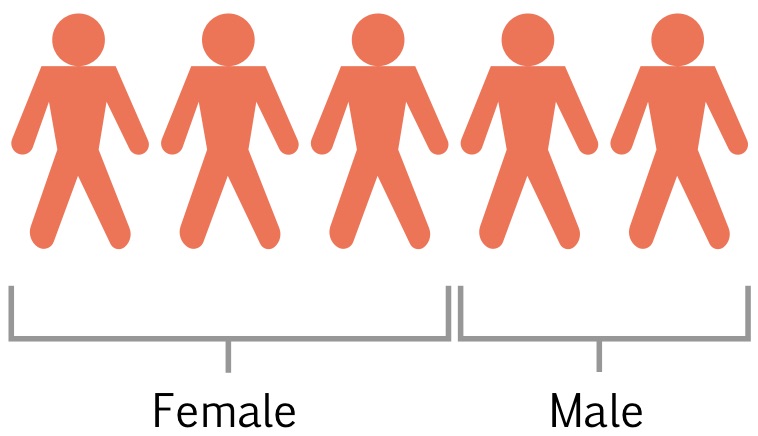
User Interviews
3 Females & 2 Males
Between the age of 25 – 35
Going into this, I thought I would gain an understanding of issues people have with produce. What I learned, however, were deep rooted problems that went beyond that. Thus, I re-centered the focus and revised my initial hypothesis.
Revised Problem Statement
“Working adults who want to live a healthy lifestyle have a problem sustaining a healthy eating habit because of cost, time and motivation.”

With the new revised problem statement defined, I conducted a few more user interviews to solidify my data. I created an affinity map with the information gathered from the interviews, in which I placed them into one of the five categories: Goals, Motivations, Values, Behaviors and Pain Points.
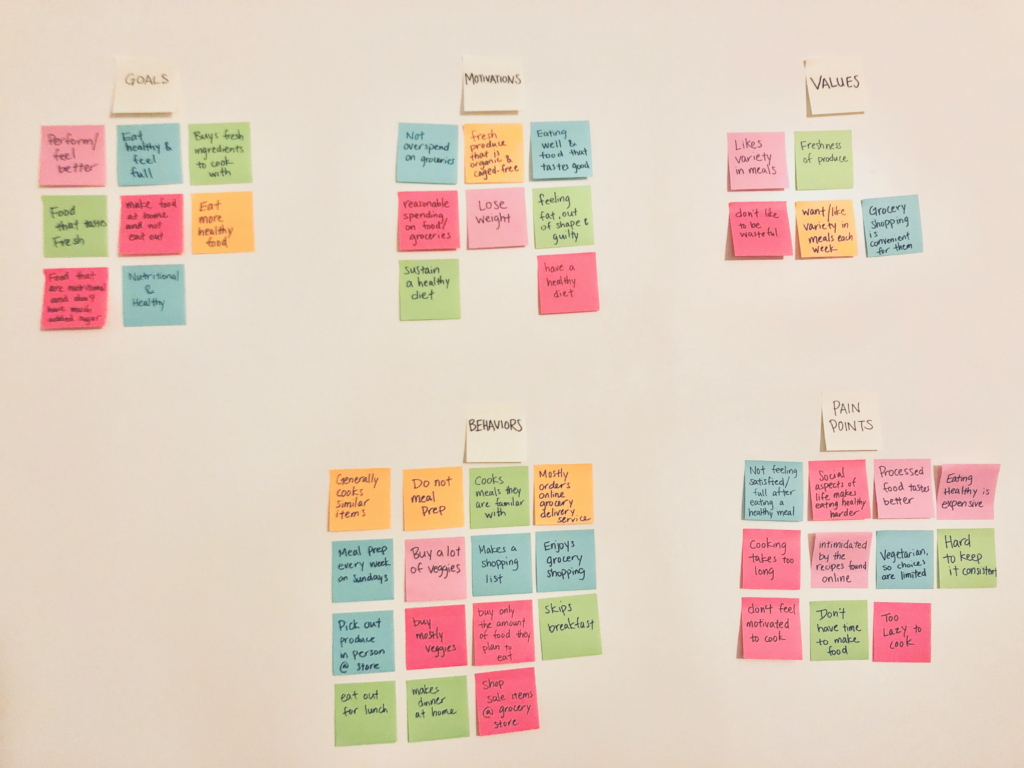
Key Quotes From User Interview

“I really want to eat and feel healthy but I can’t be consistent with it. I find myself falling off the wagon when I go on vacation or when I am stressed.”

“I can’t find the motivation to cook after I get home from work. I end up making something that takes minutes to put together, like mac and cheese or dino nuggets. Or lately, it’s been a lot of take-out.”

“Social gathering makes it hard for me to keep a healthy diet because it usually involves eating out and drinking.”
Persona

I searched the internet for apps that target people’s desire to eat healthy and did an analysis of its features.
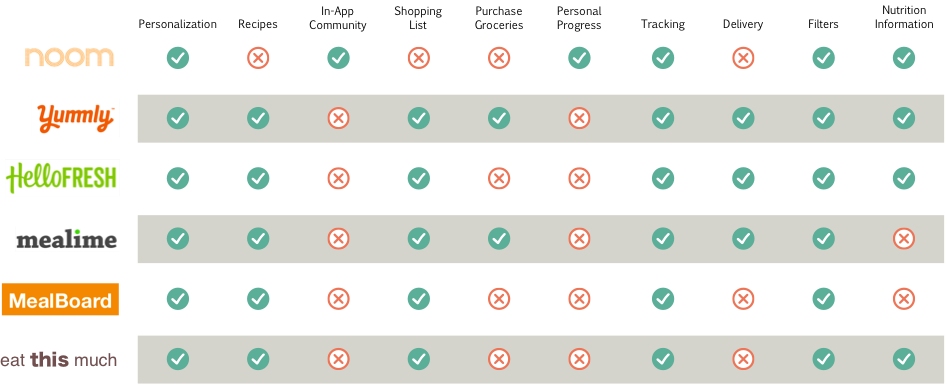
From here, I conducted a feature prioritization using dot map, open card sort, and compare-pair method, to narrow down the features I want in my app to create a minimal viable product.
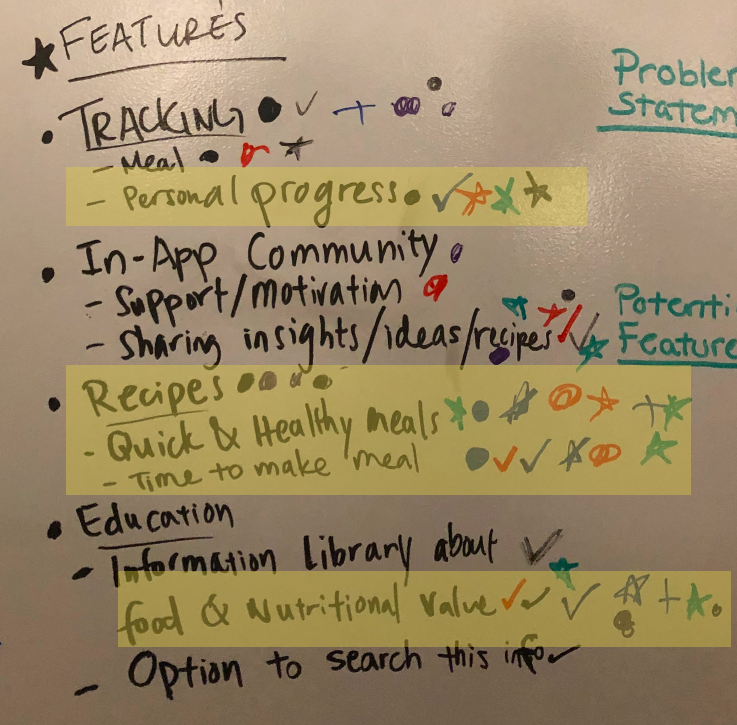
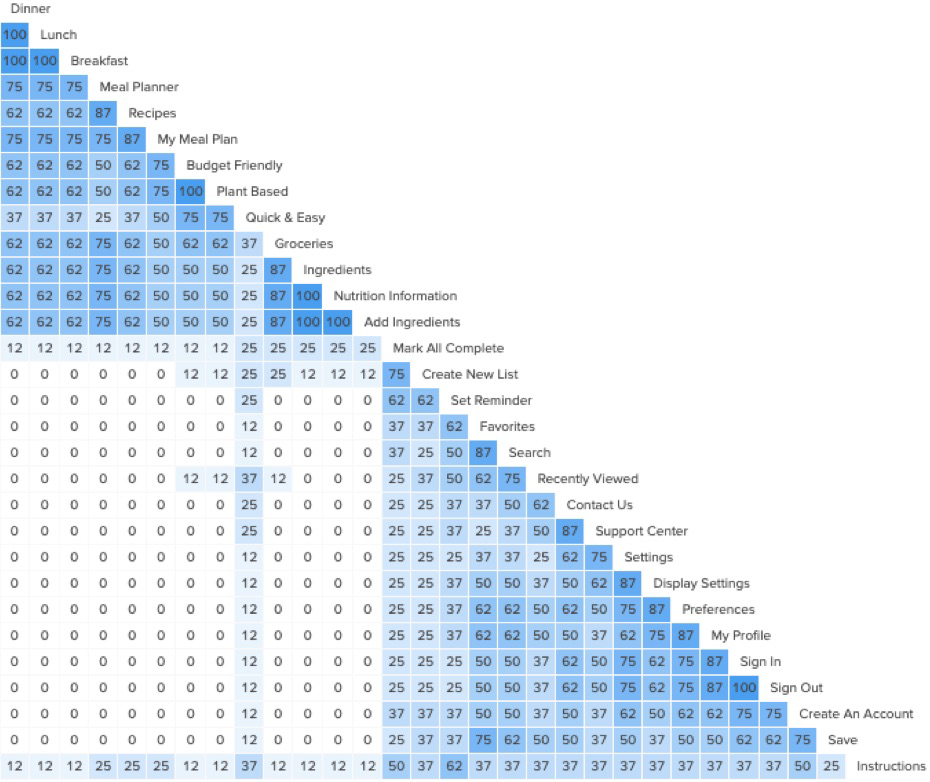
I established two site maps: one for users without log-in information (new users) and the other for users that have created an account. Giving the option to access the app without an account was important for user experience – one of the things I learned from conducting feature prioritization. The primary flow below demonstrates the shortest way the users need to take to reach their desired goals.
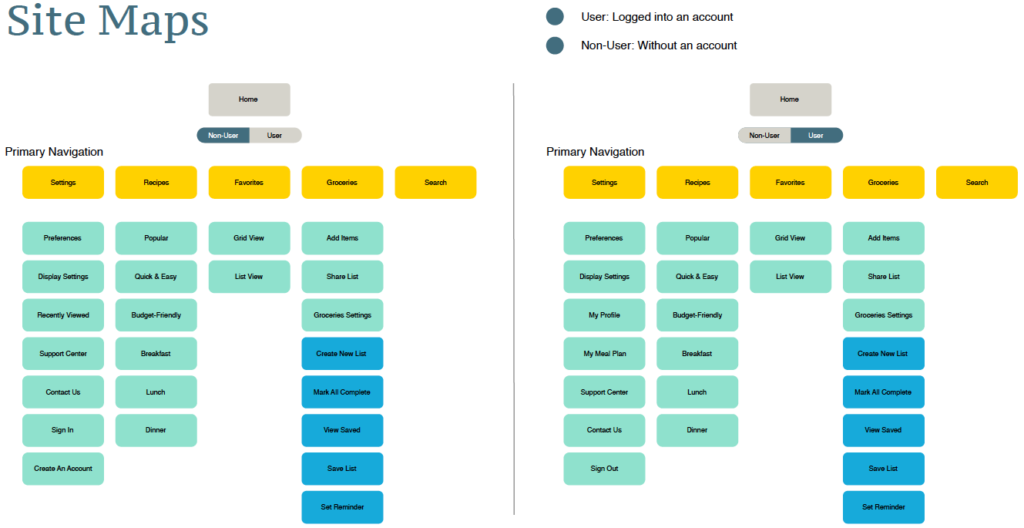

Overall the flow of the app was intuitive and the users did not have a lot of trouble finding what they are looking for. Though after conducting user-testing with the initial (lo-fi) designs, it was apparent that some icons did not make sense to the users.


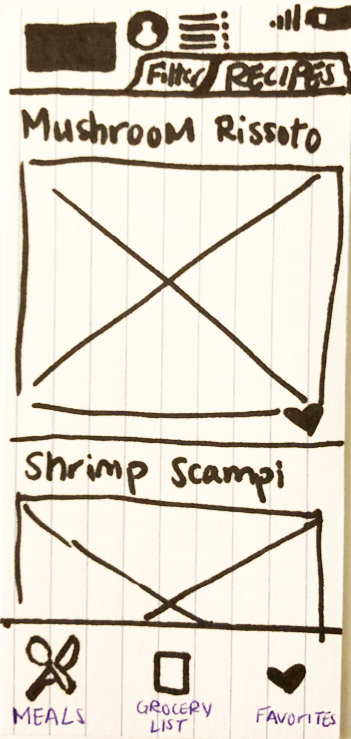

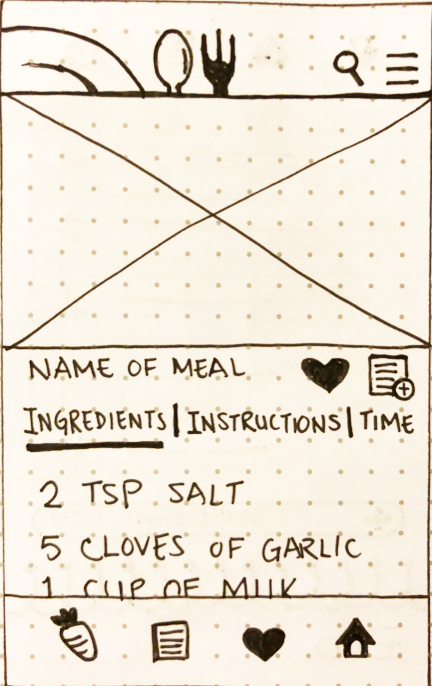
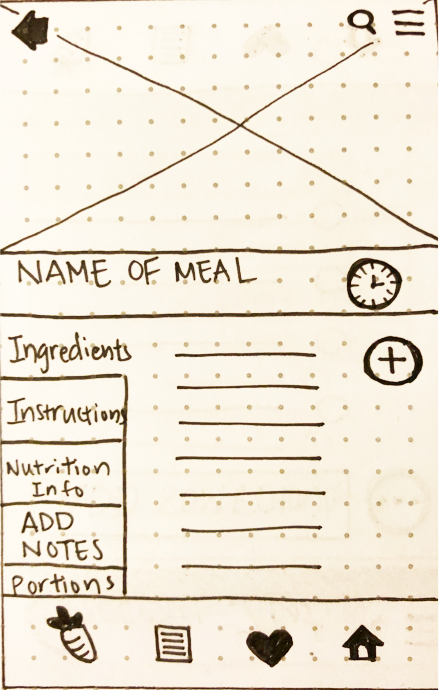


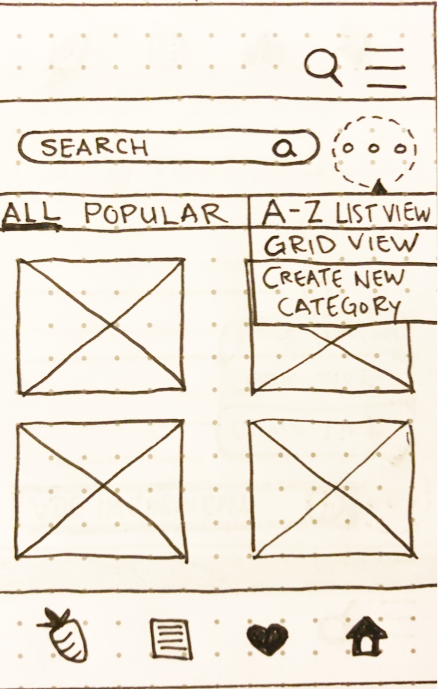

The visual design inspiration came from the mood board I put together of vegetables and meals. I extracted common color themes and used it as my color palette for the app.

The final app design includes visually appealing images of food and clear description for easy browsing. There is an option to create account for people that want a little bit more customization to tailor to their needs.
MOVING FORWARD, there is still a lot to explore with Simple Plate. Further research to find out what information users find useful and conduct additional user testing to eliminate features that are irrelevant. Would the user benefit from an in-app community? What if users can connect with each other and share recipes, experiences and support? Even though the user interviews suggest that users prefer to shop for groceries in person, I wonder if grocery delivery is offered at a reasonable price that appeal to them differently. These are some of the questions I’d like to expand on with continuation of this project.
Project Scope
Project timeline: 10 weeks
Design Tools: Sketch & InVision
Business Goal: While solving a common problem people face with sustaining a healthy diet, businesses can profit through in-app advertisements or users’ subscription to the Simple Plate Plus services. Simple Plate Plus would be a bonus extension of the content to what is available.

